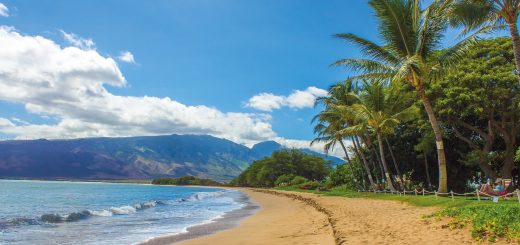Italy’s History in the Aloha State
When thinking of the history of Hawaii, not many individuals may consider Italy’s impact on the development of the state and its culture. Italian culture has become a precedent to almost every cultural aspect around the world. From food, to art, to music, Italy’s most famous figureheads have all played a part in some way influencing the world around them. With that said, it shouldn’t be too surprising that Hawaii was one of many locations affected by the surge of Italian accomplishment.
Though they may not be heavily numbered throughout the state, many Italians have come to Hawaii and left some sort of impact in one way or another. Among those, one of the earliest visitors was Italian author Paolo Botta in 1828. He was inspired to travel to the Aloha State by his father’s writings recounting his voyage and stay. Not much was known about Hawaii from countries around the world during this time, so a detailed account of the state’s beautiful beaches, coastlines, and mountains surely drew a number of visitors from all over the world.
One of the next notable visitors to call Hawaii his home was John Owen Dominis. Though he was American born, his Italian heritage was prominent throughout his life. His son, John Owen Dominis II, would grow up on his father’s estate, and eventually wed Lili’uokalani; the first queen of Hawaii. This interconnection between Italian and Hawaiian heritage would prove to be a long standing one, as Lili’uokalani would live in the Dominis home until her death in 1917. Then, the mansion was purchased by the Territory of Hawaii to be declared as the official governor’s mansion.
During the lifetime of John Owen Dominis II, King Kalakaua appointed him as governor of Oahu and Prince Consort of the Kingdom of Hawaii due to his wife being the queen. After his death, Dominis II was buried in the Royal Mausoleum located in Nu’uanu Pali. He is one of very few non-Hawaiians to claim a grave at this site.
A surprising business that affected both Italy and Hawaii was the thriving pineapple business in the early 1900’s. Italian inventor Henry Ginaca, who developed the Ginaca machine, revolutionized the incredibly popular fruit through his device. This machine peeled and cored pineapples at an extremely efficient rate, and eventually leading to canned pineapples.
Several notable Italians have left their marks on Hawaii’s culture, shaping it in ways that are still prevalent today. Aside from the countless restaurants embodying Italian culture around each island, political ideas, architecture, and more can all be traced back to an introduction to Italy.


